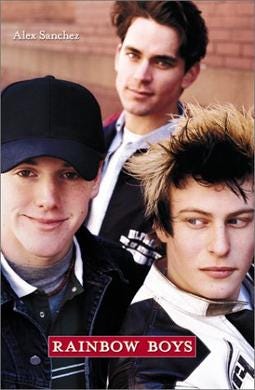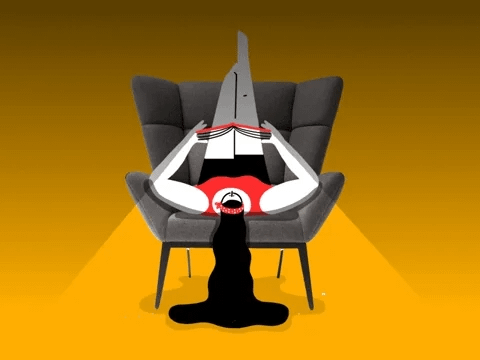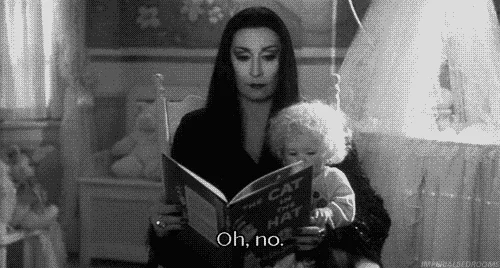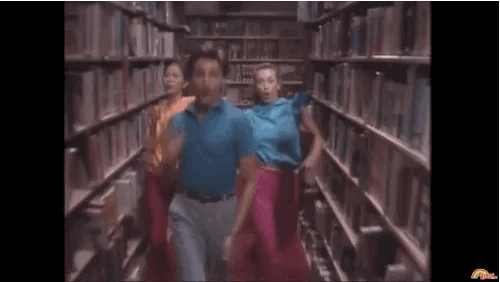Popping back with a brief little newsletter for you during my hiatus—stay tuned later this summer for more writing from me!
The YA section for one of my local library branches was in the basement, a decidedly less pretty and stately area of the otherwise historic building. It smelled like library—old paper—and must. But I loved it down there. Every week I’d go with my dad to the library and he’d peruse the adult nonfiction section in a big airy room with stained glass windows while I descended the stairs to the cool quiet of the YA bookshelf below. This was the 2000s, so it was the kind of space you had to walk past a computer lab to get to, and past a table of books that, at that time, would have had signs like “DO YOU LOVE HARRY POTTER? TRY THESE MAGICAL TITLES!”
I devoured YA books in middle school and high school. I won an award in the seventh grade for reading the most books in a year (54), which I was stupid proud of (and still kind of am, how did I do that?!). What I liked most about them was that YA books, while not necessarily explicit, dealt with what I saw at that time as real subjects in ways that didn’t feel overwhelming. Those “real subjects” were things like life and death, friendship and adventure, not to mention romance and sexuality. I could not get enough of them, all of them. Yes, they could be syrupy sweet or overly simplistic. Yes, the emotions in them could be intense. But if you met me back in my teen years, you’d know that everything was intense because, well, being a teenager even under the best of circumstances is intense.
Today, YA is this genre that looks down upon for so many reasons, many of which can just be boiled down to internalized misogyny and society’s general disdain for teen girls in all their forms. But I think what’s often missed in these discussions is that YA gives a formula for considering subjects that aren’t easy to broach for teens but that feel as vital to their sense of self as anything else. YA deals with the sticky, difficult, complicated stuff of life without leaning into graphic detail, but also without shying away from grittiness.
Including queerness.
That bookshelf down in my library’s basement had YA classics like Go Ask Alice (which was a total fiction and never should have been touted as nonfiction!!!!) and Sarah Dessen novels (which I reread with ravenous delight throughout my teen years, swooning over every boyfriend described in her pages).
But there were also books on subjects it seemed like no one wanted to talk about. And the first one I encountered was Rainbow Boys by Alex Sánchez, about three high school senior boys coming to terms with their sexualities and queerness. I’m pretty sure I was 13 or 14 when I read it, and it was the kind of book that stayed with me long after reading. I felt like I knew those characters, I knew their school, and I knew their struggles.
I couldn’t put it down.

Rainbow Boys wasn’t the only queer book in that library basement, but its one that I remember, and which has been considered a classic of the genre for years now. Sánchez didn’t initially set out to write a YA novel per se, but I think that was a part of its charm. It wasn’t written for teens in a condescending way to explain homosexuality. It didn’t have a moral or easy happy ending, but it also wasn’t salacious or graphic. Sánchez, I remember vividly, described the fixation of having a crush beautifully and clearly. The book touched on HIV/AIDS, but that was not the primary focus. These weren’t tragic gay guys sentenced to death by their sexuality. They were at the beginning of their lives, exploring themselves, making mistakes, and falling in love.
In other words: Rainbow Boys was a positive, normalizing story. I could relate to it fiercely, even though I did not identify as a gay man. And the story itself felt far more “real” to me than moralizing “nonfiction” garbage like Go Ask Alice.
The book became a talisman over the next several years as friends of mine came out. I recommended it to my other bookworm-y pals, who also loved it, who also spread the word.
I’m writing this during Pride Month 2024, as book bans and drag bans and moral panics abound all around me. And I guess the point of this newsletter is to remind folks that sometimes the safest way to navigate anxiety-producing, awkward, or fraught subject matter can be through fiction. There’s a reason why we love fiction, and that’s because it allows us a safe place to explore the parts of ourselves we ourselves may struggle with, if not in that moment then later on in our lives.
If I’d never read Rainbow Boys during the armpit of my pubescent youth, I don’t think my life would be radically different. But I do think it paved the way for a kind of radical empathy I carry with me to this day, which is a value I hold nearest and dearest to my heart.
Reading about queerness or any experience outside of yourself doesn’t “make” you gay. That’s not the actual power of reading. The power of reading is the ability to be able to assign language to something you already felt, or witnessed, or were wrestling with. And homosexuality and queerness and trans-ness have existed long before my hometown public library was built, not to mention centuries before any YA novels were invited to “market” to young women specifically.
If this speaks to you, I hope that this pride month you’ll consider donating to one or all of the following organizations who are supplying access to resources and books for queer youth right now. Because we all benefit from seeing ourselves in the books on our library shelves and e-reading apps.
Queer Liberation Library (QLL): Queer Liberation Library fights to build a vibrant, flourishing queer future by connecting LGBTQ+ people with literature, information, and resources that celebrate the unique and empowering diversity of our community.
Hope in a Box: Hope in a Box equips educators with LGBTQ-inclusive curricula, training, and mentorship. Together, we use literature to cultivate empathy and ensure every LGBTQ student feels safe, welcome, and included at school.
Bureau of General Services - Queer Division: This is an independent, all-volunteer queer cultural center, bookstore, and event space established in 2012 and hosted by The Lesbian, Gay, Bisexual & Transgender Community Center in NYC since 2014. We aim to foster a community invested in the values of mindfulness, intellectual curiosity, justice, compassion, and playfulness.
Pride & Less Prejudice: All donations go towards giving LGBTQ-inclusive books to PreK - 3rd grade classrooms in the United States. These books help create more inclusive and accepting communities.
Do you have a queer and/or banned book from your youth that you loved? Leave a comment below with the title! Maybe I read it too!







